Revue de presse, 5 février
Mali
"Plus de trois ans après la destruction des mausolées de Tombouctou par les jihadistes, à coups de pioche, de houe et de burin, la cité légendaire du nord-ouest du Mali a repris jeudi possession de ses sanctuaires reconstruits" — Défigurée par les jihadistes, Tombouctou retrouve petit à petit son visage (AFP, RTBF Info)
"Des présumés jihadistes ont attaqué vendredi un camp de la Mission de l'ONU au Mali (Minusma) à Tombouctou, dans le nord du pays, blessant au moins un Casque bleu nigérien, a appris l'AFP de sources militaires et de sécurité" — Mali : attaque d'une base des Nations Unies à Tombouctou par des présumés djihadistes (AFP, La Libre)
Revue de presse, 4 février
USA
"Un nouveau sondage vient tempérer cette idée qu'il faut être croyant et afficher sa religion pour être élu président des Etats-Unis, car les favoris des sondages dans la course à la Présidentielle ne sont pas perçus comme les plus croyants et pratiquants" — Dieu, les Américains et les candidats à la Maison Blanche (Euronews)
"Il aura fallu sept ans à Barack Obama pour fouler les tapis d'une mosquée américaine. La visite [... ] était donc particulièrement attendue par la communauté musulmane, d'autant que le climat d'islamophobie qui règne dans le pays a rarement été aussi pesant — Première visite de Barack Obama dans une mosquée américaine (Stéphanie Le Bars, Le Monde)
Revue de presse, 3 février
Inde
"Un prêtre et les trois laïcs du Diocèse de Ramanathapuramune ont été malmenés avec violence pendant une durée prolongée dans les environs de Coinbatore, ville de l'Etat du Tamil Nadu, dans le sud de l'Inde. D'après l'agence Fides, ils auraient été victimes d'une foule de jeunes, probablement proches de groupes extrémistes hindous" — Un prêtre et trois laïcs agressés en Inde (Manu Van Lier, Cathobel)
"Nouvel épisode dans la bataille que se livrent l'Inde conservatrice et religieuse et la communauté gay et lesbienne, dans un pays où l'homosexualité est encore largement taboue" — Inde : la Cour suprême va réexaminer la loi pénalisant l'homosexualité (Le Monde)
Revue de presse, 2 février
Boko Haram
"Les représentants de la communauté internationale, réunis lundi au siège de l'Union africaine (UA) à Addis Abeba pour une conférence des donateurs, ont promis de dégager 250 millions de dollars (231 MEUR) en vue de lutter contre le mouvement islamiste Boko Haram" — La communauté internationale promet 250 millions de dollars pour lutter contre Boko Haram (AFP, La Libre)
"Au moins 85 personnes ont été tuées dans l'attaque qui a frappé samedi 30 janvier une localité proche de Maiduguri, dans le nord-est du Nigeria, selon le dernier bilan des autorités. Les assaillants, des militants présumés du groupe islamiste Boko Haram, ont tiré sur la population de Dalori avant de mettre le feu au village" — Hécatombe après une attaque de Boko Haram dans le nord du Nigeria (AFP, Le Monde)
La kabbale contemporaine, entre mystique des lettres et thérapie alternative
- Auteur Anna Maria Vileno
La kabbale est plus que jamais à la mode dans le monde de la spiritualité alternative. Si des institutions comme le Kabbalah Centre rassemblent plusieurs milliers de membres à travers le monde, la kabbale donne également lieu à de nombreuses publications visant à vulgariser le sujet et à le mettre en perspective avec de nouvelles disciplines. Deux thèmes en particulier sont traités de façon récurrente : la mystique des lettres et leur pouvoir thérapeutique. Il semblerait en effet que le grand public soit en demande de nouvelles voies de connaissance de soi et, à travers elle, d’une recherche d’un mieux-être, caractéristique des formes contemporaines de spiritualité. Cet engouement reflété par le monde de l’édition est emblématique à plus d’un titre. D’une part, il témoigne d’un intérêt grandissant du public pour la kabbale et pour les lettres hébraïques en particulier ; d’autre part, il s’inscrit dans un mouvement de vulgarisation de la mystique juive, qui s’intègre ainsi toujours plus dans le paysage de la spiritualité alternative.
Revue de presse, du 30 janvier au 1er février
La religion dans la cité, 29 et 30 janvier
"'Le Soir', en partenariat avec l'ULB et la RTBF, ouvre une agora citoyenne sur le retour du religieux dans le débat public" — Abdennour Bidar : «La religion est de plus en plus inadaptée à notre monde» (Corentin Di Prima, Le Soir)
"L'Europe entretient un rapport difficile à l'islam. Notre sondage le montre : c'est la religion qui divise le plus. Pourquoi ? 'La peur de l'islam, la peur dans l'islam', c'était le thème du deuxième débat de la journée à Flagey" — «Les sociétés occidentales sont en paix parce qu'elles exportent la guerre» (Corentin Di Prima, Le Soir)
Revue de presse, 29 janvier
La religion dans la cité, 29 et 30 janvier
"Les 29 et 30 janvier prochains, à Flagey, 'Le Soir', en partenariat avec l'ULB et la RTBF, ouvre une agora citoyenne sur le retour du religieux dans le débat public" — Quelle place pour la religion dans la cité? (Le Soir)
"La religion se porte bien, merci. C'est sans doute le grand enseignement et la grosse surprise de notre sondage Ipsos-ORELA-RTBF-Le Soir, lancé dans le cadre du colloque 'La religion dans la cité' ces 29 et 30 janvier à Flagey" — 75% des francophones revendiquent une identité religieuse (E. BL., Le Soir)
Un sondage ORELA/IPSOS/Le Soir/RTBF : « Les Belges francophones et la religion »
La manière dont le grand public et les médias se représentent le fait religieux est souvent tributaire des coups de projecteurs braqués sur les religions en raison de l’actualité immédiate et des rapports de force qu’elles subissent ou entretiennent entre elles — voire avec l’Etat et les collectivités locales. Dès lors, beaucoup de stéréotypes et a prioris circulent sur les religions, leurs pratiques et les croyants. Pour les sciences humaines, l’une des manières les plus efficaces d’approcher la façon dont la religion est vécue, pratiquée, perçue et expérimentée par les individus est l’enquête. ORELA, dans le cadre de "La Religion dans la Cité", et en collaboration avec Le Soir et la RTBF, vient ainsi de faire réaliser par IPSOS un sondage sur « Les Belges francophones et la religion ». Quels enseignements en tirer ?
Revue de presse, 28 janvier
La religion dans la cité, 29 et 30 janvier
"Les 29 et 30 janvier prochains, à Flagey, 'Le Soir', en partenariat avec l'ULB et la RTBF, ouvre une agora citoyenne sur le retour du religieux dans le débat public" — Quelle place pour la religion dans la cité? (Le Soir)
"Nos sociétés occidentales vivent un curieux paradoxe : jamais comme aujourd'hui elles n'ont été à ce point sécularisées et laïcisées. Pourtant, la religion est partout : dans la presse, les débats publics, les cours et tribunaux, le monde des livres..." — La religion dans la cité (La Première, RTBF)
Revue de presse, 27 janvier
Iran
"Le pape François a exhorté mardi 26 janvier l'Iran à jouer 'son rôle important' au Moyen-Orient en y 'promouvant des solutions politiques adéquates', qui mettent fin à 'la diffusion du terrorisme'.La situation des chrétiens en Iran reste contrastée et souvent compliquée" — En Iran, la vie des chrétiens reste difficile (Claire Lesegretain, La Croix)
"Dès dimanche 24 janvier, la rumeur de l'invalidation de Hassan Khomeyni, petit-fils de l'ayatollah Ruhollah Khomeyni, fondateur de la République islamique en 1979, a commencé à circuler sur les sites proches des conservateurs" — Le petit-fils de Khomeyni recalé pour un SMS (Blogs-Le Monde)
Plus...
Revue de presse, 26 janvier
Documentaire
"Polémique. En salle ce mercredi 27 janvier, le documentaire donne à voir l'application du salafisme et fait entendre ses idées, sans filtre" — Documentaire : "Salafistes", le film qui dérange (Claire Meynal, Le Point)
"Réalisé par Lemine Ould Salem et François Margolin, le film sur le terrorisme notamment au Mali a reçu un avis négatif du ministère de l'Intérieur pour sa diffusion. Sa sortie, prévue le 27 janvier, est suspendue désormais à la décision de Fleur Pellerin" — Le gouvernement va-t-il censurer le documentaire Salafistes? (Hugo-Pierre Gausserand, Le Figaro)
"Face au public" dans le cadre de La Religion dans la Cité"
Retrouvez nos invités de "La Religion dans la Cité" dans les « Face au public », au Studio 1 de Flagey...
Le vendredi 29 janvier :
15h10 : Delphine Horvilleur
15h40 : Jean Baubérot
16h20 : Faouzia Charfi
16h50 : Marie-Claire Foblets
17h30 : Olivier Roy
18h10 : Tariq Ramadan
Le samedi 30 janvier :
11h : Abdennour Bidar
11h40 : Bernard Foccroulle
12h20 : Jean-Loup Amselle
14h : Gilbert Achcar
14h40 : Abdelmajid Charfi
15h20 : Jean-Claude Bologne
Revue de presse, 25 janvier
Belgique
"L'Exécutif des musulmans de Belgique sera bientôt scindé en deux sous-entités, un collège linguistique francophone et son pendant flamand. 'L'arrêté royal est prêt', a indiqué jeudi à la Chambre le ministre de la Justice Koen Geens. Il sera signé d'ici la fin du mois" — Une aile francophone et une aile néerlandophone à l'Exécutif des musulmans (Belga, RTBF Info)
"Une veillée qui a rassemblé de nombreux membres des Eglises orthodoxes, anglicanes, catholique, protestantes et apostolique arménienne, parmi lesquels le pasteur Steven Fuite, le rev Canon Jack Mc Donald, Mgr Jozef De Kesel, Mgr Giacinto Berloco et le Révérend-Père Zadik Avedikian" — Bruxelles : échos de la Veillée oecuménique de prière (Pierre Granier, Cathobel)
Revue de presse hebdo, 23 janvier
Islande
Le taux de jeunes islandais de moins de 25 ans qui pensent que l'univers a été créé par dieu est de... 0,0%. C'est le résultat d'un sondage repris par Iceland Magazine. Dans le détail, 93.9% des sondés pensent que le big bang est à l'origine de l'univers et 6,1% n'ont pas d'opinion sur la question — Le créationnisme ? En Islande, aucun jeune n'y croit (L'Obs)
Italy
Pontiff says God wants ‘indissoluble matrimony that unites and allows procreation’ as senate prepares to debate rights for same-sex couples — Pope Francis defends 'traditional' marriage ahead of Italy civil unions vote (The Guardian)







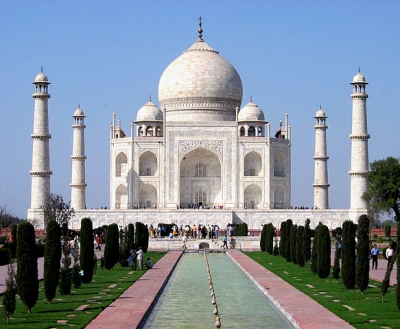
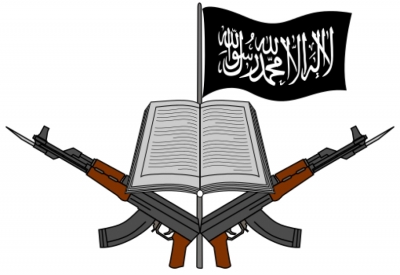
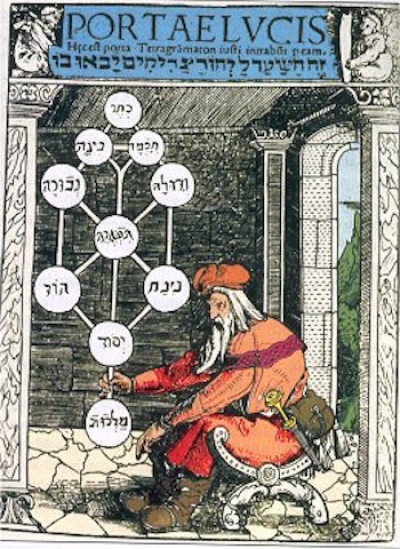
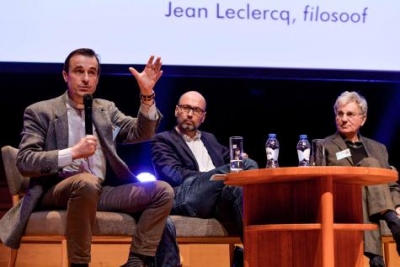
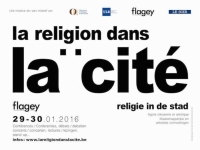
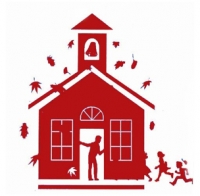
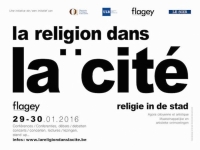





 MangoGem
MangoGem